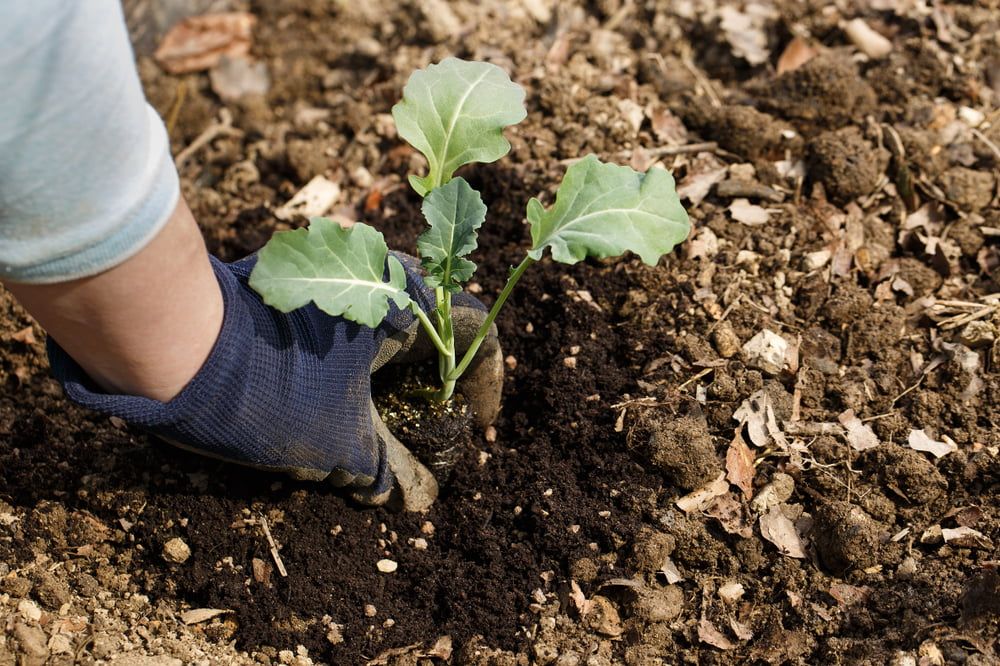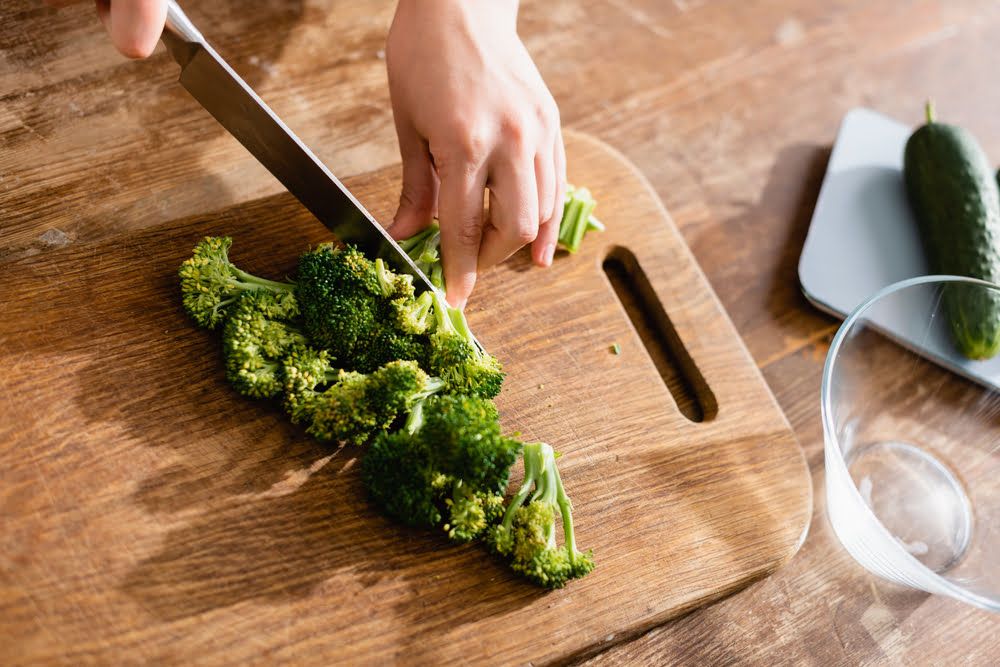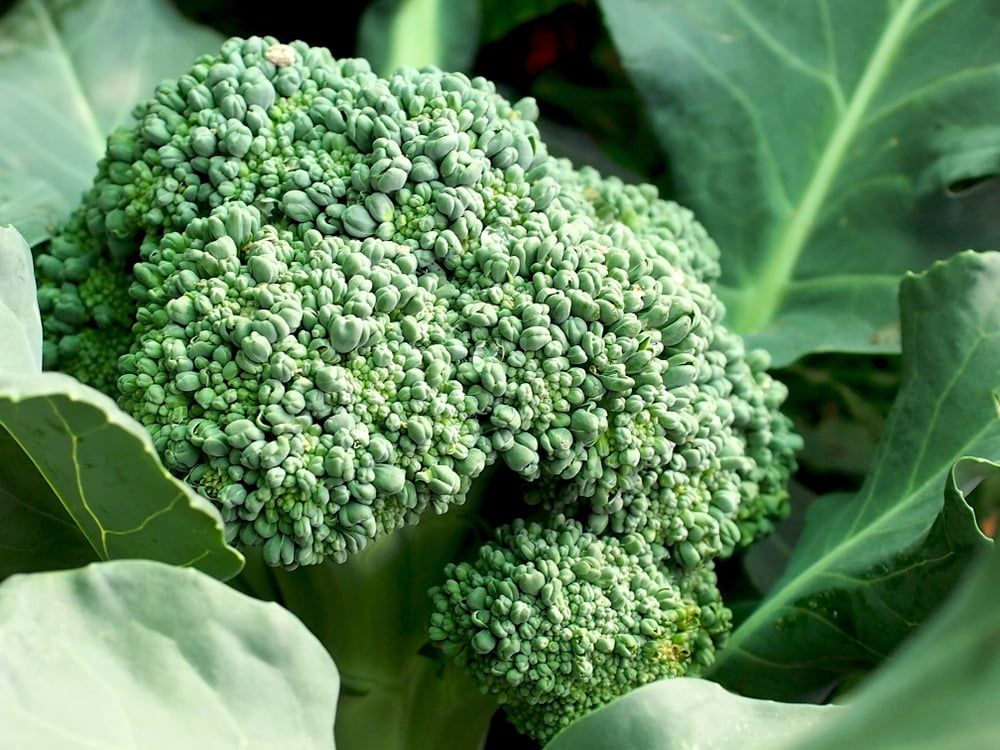
How to Grow Your Own Calabrese Broccoli
Growing Calabrese broccoli in the UK is a rewarding endeavor, as it can provide you with delicious heads of broccoli in a relatively short period.
Calabrese, often simply referred to as broccoli, is a variety that produces large, green heads and is more tolerant of a variety of weather conditions, making it well-suited to the UK climate.
Here’s a step-by-step guide to help you grow Calabrese broccoli:
1. Select the Right Variety
- Choose a variety that is known for its performance in the UK climate. Some popular varieties of Calabrese include ‘Green Magic’, ‘Ironman’, and ‘Belstar’.
2. Sowing Seeds
- Indoors: Start seeds indoors from early to mid-spring (around March to April) in a seed tray or individual pots with seed starting compost. Sow seeds about 1cm deep, keeping the soil moist but not waterlogged.
- Direct Sowing: You can also sow directly outdoors from late spring to early summer (around May to June) if the soil temperature has warmed up.
3. Germination
- Seeds typically germinate in 7-14 days at temperatures between 18°C and 21°C. Ensure seedlings have plenty of light to prevent them from becoming leggy.
4. Transplanting
- Once seedlings have grown to about 10-15cm tall and have at least two sets of true leaves, they’re ready to be transplanted outdoors. This is usually about 4-6 weeks after sowing.
- Harden off plants for 7-10 days before transplanting to acclimatize them to outdoor conditions.
5. Planting Out
- Choose a sunny spot with well-draining soil. Calabrese prefers a fertile, slightly acidic to neutral soil (pH 6-7).
- Enrich the planting area with well-rotted manure or compost a few weeks before planting.
- Space plants about 40-45cm apart in rows that are 45-60cm apart.
6. Watering and Feeding
- Keep the soil consistently moist, especially during dry periods. Mulching around the plants can help retain soil moisture.
- Feed with a general-purpose vegetable fertilizer or well-rotted manure/compost after planting out and again when heads start to form.
7. Care During Growth
- Keep an eye out for common pests such as cabbage loopers, aphids, and caterpillars. Use netting to protect plants from birds and butterflies.
- Practice crop rotation to prevent soil-borne diseases and pests.
8. Supporting Plants
- Calabrese plants can become top-heavy as the heads grow. While they generally don’t require staking, ensure plants are well-rooted and sheltered from strong winds.
9. Harvesting
- Harvest Calabrese broccoli when the heads are firm and tight, before the flowers start to open. Cut off the central head with a sharp knife, which will encourage side shoots to develop for later harvests.
- Harvesting usually occurs in late summer to autumn, depending on the sowing time.
10. Aftercare
- After the main head is harvested, smaller side shoots will form, which can be harvested regularly. Keep the plant well-watered and fed to encourage continued production.
11. End of Season
- Once production significantly slows or the plant shows signs of bolting (flowering), it’s time to remove and compost the plant. Consider planting a green manure crop to enrich the soil for the next season.
Growing Calabrese Broccoli: A Quick Snapshot
When to Sow – Feb-Jun
When to Plant – Apr-Jun
When to Harvest – Aug-Oct
Average Yield per Plant – 350g
Spacing – 40-45cm
Depth – 2cm
How to Grow Calabrese Broccoli at Home
Ask around and many gardeners will tell you that Calabrese broccoli is a difficult vegetable to grow. While it’s true that this brassica is often plagued with pests and diseases, the healthier your plants are, the less vulnerable they’ll be. Give them a good start and a basic level of care and you could be harvesting your very own broccoli heads in just a few months time.
Growing Requirements for Calabrese Broccoli
Let’s start with space, because if you’ve never grown Calabrese broccoli before, you’ll be surprised at how much room they need. Ideally, you want each plant to have around 45cm of space. You can reduce this a little, but head size will be smaller, and your plants will also struggle to produce many side shoots after the main head has been harvested.
That’s right, give your plants enough space and you’ll be able to enjoy several smaller Calabrese harvests after the central head has been picked. This is what makes Calabrese broccoli such a productive plant.
In terms of choosing a growing site, pick somewhere that’s in full sun. The exception would be for those of you in warmer climates – a little afternoon shade will prevent your broccoli from bolting early.
Calabrese broccoli isn’t too picky about soil. So long as it’s fertile and well-draining (broccoli hates having constantly-damp roots), you’re good to go.
How to Grow Calabrese Broccoli from Seed
While Calabrese broccoli seeds can be direct sown once the weather warms up in the spring, results are usually better when the seeds are started in modules indoors. Not only does this improve germination rates, but your plants will also be healthier.
How to Sow Calabrese Broccoli Seeds in Modules:
- Fill module trays with a multi-purpose compost
- Water the compost well, making sure that the drainage holes at the bottom are functioning properly
- Make an indentation in the centre of each module, about 2cm deep
- Place 1-2 Calabrese seeds into each one
- Cover the seeds back over with soil
- Lightly water again and then place your trays somewhere protected. Consistent temperatures of around 13°C are needed for optimum germination
Your Calabrese broccoli seeds will germinate in about one to two weeks. Once they do, give them another week to grow, ideally in plenty of light, before thinning out the weaker seedlings from each pot. Rather than throwing them out, use them as microgreens to garnish your next meal!
Early summer is usually the best time for planting out Calabrese broccoli seedlings. Until then, keep your seedlings moist, but don’t overwater. Broccoli seedlings tend to do better when they’re kept on the drier side, but never allow the soil to fully dry out either.
If you notice roots emerging from the bottom of your modules before it’s time to move your plants out, they’ll need to be transplanted into a larger container. Do this carefully so as to disturb the roots as little as possible.
How to Direct Sow Calabrese Broccoli Seeds:
- Prepare your growing area by making sure that it’s weed-free and the soil is well-draining
- Create shallow furrows in the ground, about 2cm deep
- Sow your seeds thinly
- Cover the seeds back over with soil and gently firm the soil down
- Water lightly after sowing, taking care not to wash any of the seeds away
Once your seedlings are about 6cm tall, thin them out so that there’s about 45cm of space between each one.
How to Plant Calabrese Broccoli Outside
Before planting your Calabrese broccoli out, you’ll need to harden your seedlings off. This process takes about a week to 10 days, and is an important part of minimising transplant shock.
Once your seedlings have acclimatised to the outdoor elements, you can plant them out. Make sure that your growing area is weed-free, and then dig your planting holes. These should be just slightly larger than the size of the modules that your seedlings are in. Space each hole 45cm apart.
Gently remove your seedlings from their modules, taking as much soil as possible with you too. Place them into their new homes, cover the roots back over with soil, and then firm down well. Broccoli prefers a firmer soil. Then, water your plants well.
If your seedlings were looking a little leggy, you can bury them up to their first set of true leaves. This will help to stabilise them and keep them growing straight.
If the brassicas that you grow are usually plagued with pests, then now would also be a good time to cover your seedlings with netting.
How to Plant Calabrese Broccoli in a Greenhouse
Calabrese broccoli that’s grown in the summer won’t do well in a greenhouse. The heat would be too much for the plants, causing them to bolt before they’ve had the chance to mature.
However, you can still use your greenhouse to germinate summer-maturing Calabrese, before planting your seedlings outside.
Alternatively, sow some seeds in your greenhouse mid-summer. You’ll then have a crop that you can harvest in the autumn, and, depending on how warm your greenhouse is, perhaps through the winter too.
How to Care for Calabrese Broccoli
Although their reputation may make it seem as though they’re a tricky vegetable to care for, looking after Calabrese broccoli plants is actually pretty easy. Here’s what you’ll need to do:
Watering Calabrese Broccoli
Calabrese broccoli needs a regular supply of water to produce large heads. This usually equates to around 3cm a week. Rainfall may often provide enough, but, when it doesn’t, you’ll need to manually water your plants.
Try not to water your plants from above. Ideally, keep those leaves as dry as possible to prevent diseases from developing. Instead, aim the water at the soil around your plants.
Feeding Calabrese Broccoli
Calabrese broccoli is referred to as a superfood because of how it’s packed with nutrients. These nutrients need to come from somewhere, which is why feeding your plants is important.
A high-nitrogen fertiliser is the best formula to use, but make sure that it also contains all of the other key nutrients. Feed your plants every couple of weeks if you’re using an organic fertiliser.
Weeding and Mulching Calabrese Broccoli
If you allow weeds to smother your Calabrese plants, you won’t end up with large heads, or any heads at all. Keep your growing area weed-free as much as possible, especially while your plants are still young. However, be careful when weeding, as broccoli roots are very shallow.
Mulching your plants would also be a good idea. This will help to suppress weeds, while also keeping soil temperature and moisture levels consistent. Use an organic mulch – this will also feed your plants as it breaks down.
How to Harvest Calabrese Broccoli
Once the main heads on your plants start to mature, you can harvest them. Do this before the florets start to open – you want them to be tight, firm, and dense for the best flavour and texture. If you’ve waited too long and you can start to see tinges of yellow appearing on the heads, harvest them immediately. As soon as these open up into flowers, your broccoli will turn unpalatable.
To harvest a broccoli head, use a sharp knife to cut the stem about 15cm below the head. Don’t pull the plant up, as you’ll still be able to get another harvest.
After the main head has been picked, your plants will start to produce side shoots with smaller, but equally tasty, heads, especially if you’re still watering and feeding your plants. Again, these can be harvested as and when the mini-heads form, before they open up into flowers. These smaller heads will mature at various times, so you’ll need to keep checking on your plants.
How to Store Calabrese Broccoli
If short-term storage is what you need, then your fridge will do the job. Place your broccoli heads into an air-tight container and then store this in the fridge for a couple of weeks. Keep in mind that the longer your broccoli is in the fridge for, the tougher its texture will be.
For long-term storage, you’ll need to turn to your freezer. Blanch your broccoli first and then freeze it on a tray in a single layer. Once frozen, you can place all of the pieces into a container or bag, where they’ll happily remain in the freezer for up to one year.
How to Prepare & Cook Calabrese Broccoli
Calabrese broccoli is an easy vegetable to prepare. Every part of your harvest is edible, from the florets to the leaves to the stems. Simply rinse your broccoli under some running water, and then slice, dice, or chop, depending on the recipe you’re following.
Broccoli is a classic on the dinner table, and you probably already have a few go-to favourite broccoli dishes. However, if you want to try something a little different, a few ways to showcase your beautiful broccoli harvests are:
- Broccoli and stilton soup
- Broccoli, quinoa, and squash salad
- Broccoli tabbouleh
- Broccoli, garlic, and ricotta on toast
- Broccoli fried rice
- Broccoli bolognese
Common Calabrese Broccoli Problems
As mentioned, Calabrese broccoli is a vegetable that pests and diseases love, so you’ll need to be vigilant when growing these plants. A few common problems to keep an eye out for are:
- Caterpillars – these pests will chew holes through your plants, allowing diseases to easily take hold. If you netted your Calabrese plants after planting them out, you should be fine. If you didn’t, you’ll need to pick off any caterpillars you see, and then net your plants once they’re clear. Don’t net them until you’re 100% sure that you’ve removed all of the pests, otherwise you’ll simply trap the caterpillars into your plants, meaning guaranteed destruction
- Club root – this is a common brassica disease that causes the roots to swell and distort, and the leaves to yellow and wilt. Adding lime to make the soil more alkaline can help, but you’ll need to grow your brassicas in a different area next year
- Downy mildew – this disease thrives in damp and humid conditions. Improving air circulation around your plants can help – make sure that they’re not too crowded
- Yellowing leaves – if you notice the lower leaves on your plants starting to yellow, with this discolouration making its way up to the top of your plants, a nitrogen deficiency could be the cause. Apply some blood meal powder to the soil around your plants, which should quickly top up their nitrogen levels
Popular Calabrese Broccoli Varieties to Grow
Some of the tastiest Calabrese broccoli varieties to grow are:
- Flash – a fast-growing and heat-resistant variety that produces lots of side shoots once the central head has been harvested
- Paragon – loved for its super long side shoots
- Belstar – an award-winning variety due to its superior flavour
- Sakura Speedy – a very fast-maturing variety that’s ready for harvesting just 6-12 weeks after sowing (depending on your location)
- Fiesta – produces impressively large central heads that freeze well, along with numerous side shoots and smaller heads
Conclusion
Not only is Calabrese broccoli a delicious and versatile vegetable, but it’s also revered for its high nutrient levels and anti-cancer properties. The fact that it’s so easy to grow is the icing on the cake – these plants are low-maintenance and quick to mature, and the way in which they produce edible side shoots long after their main heads have been harvested make them well worth the large amount of space that they require.







